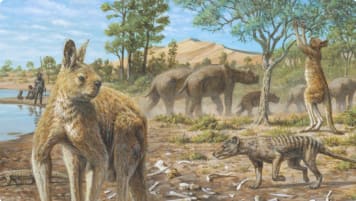The Origins of Australian Stock Routes in Indigenous Traditional Pathways
Article for senior and mature couples and single travellers taking a small group tour. Aboriginal trading routes particular to specific goods such as Pituri have shaped via songlines the highway network of Outback Australia.
27 Apr 21 · 10 mins read

Indigenous Traditional Pathways & Australian Stock Routes
By Marco Stojanovik
From the Canning Stock Route, to the Murranji, Birdsville and Strzelecki tracks, stretching across Australia is an historic network of travelling stock routes known colloquially as the ‘Long Paddock’. From the end of the 19th century until trucks and road trains took over the skilled practice mid next century, drovers would use the network to travel sheep and cattle thousands of kilometres over rough terrain along water sources to market.
The famous overlander Michael Patrick Durack stated that: “A birds-eye view of the continent in the middle of 1883… would have shown thin trails of stock converging on the big northern rivers from east to west… Meanwhile, droving parties with thousands of cattle were making from Queensland and New South Wales for scattered destinations in the Territory and Kimberley.”
The routes which they followed, however, were hardly new. Before re-territorialized by colonial governments and pastoralists, they had a long history of use dating back thousands of years. They were the traditional pathways of the Australian Aboriginals, marked and maintained for trade, travel, and ceremonial and spiritual purposes. Famous pastoralists such as Sir Sydney Kidman, Lord Vesty and John Macarthur built their empires on the back of these routes, as well as the knowledge of the land and assistance of Indigenous men and women.
This article explores how traditional Aboriginal pathways were transformed into the Australian travelling stock route network. It is part of a continuing series of pieces on Aboriginal trade, art, culture and settlement intended as practical knowledge for a number of Odyssey Traveller small group tours in Australia for both the mature and senior traveller. An appreciation of Indigenous activity is recognised as an important facet of learning in our tours, a part of our commitment to understanding and sharing our knowledge of the history, culture, and landscapes of Australia.
For more information, readers are urged to take a look at P. G. Spooner, M. Firman and Yalmambirra’s “Origins of Australian Stock Routes. 1. Connections to Indigenous Traditional Pathways”, as well as Dale Kerwin’s Aboriginal Dreaming Paths and Trading Routes. Both were used in the writing of this article.
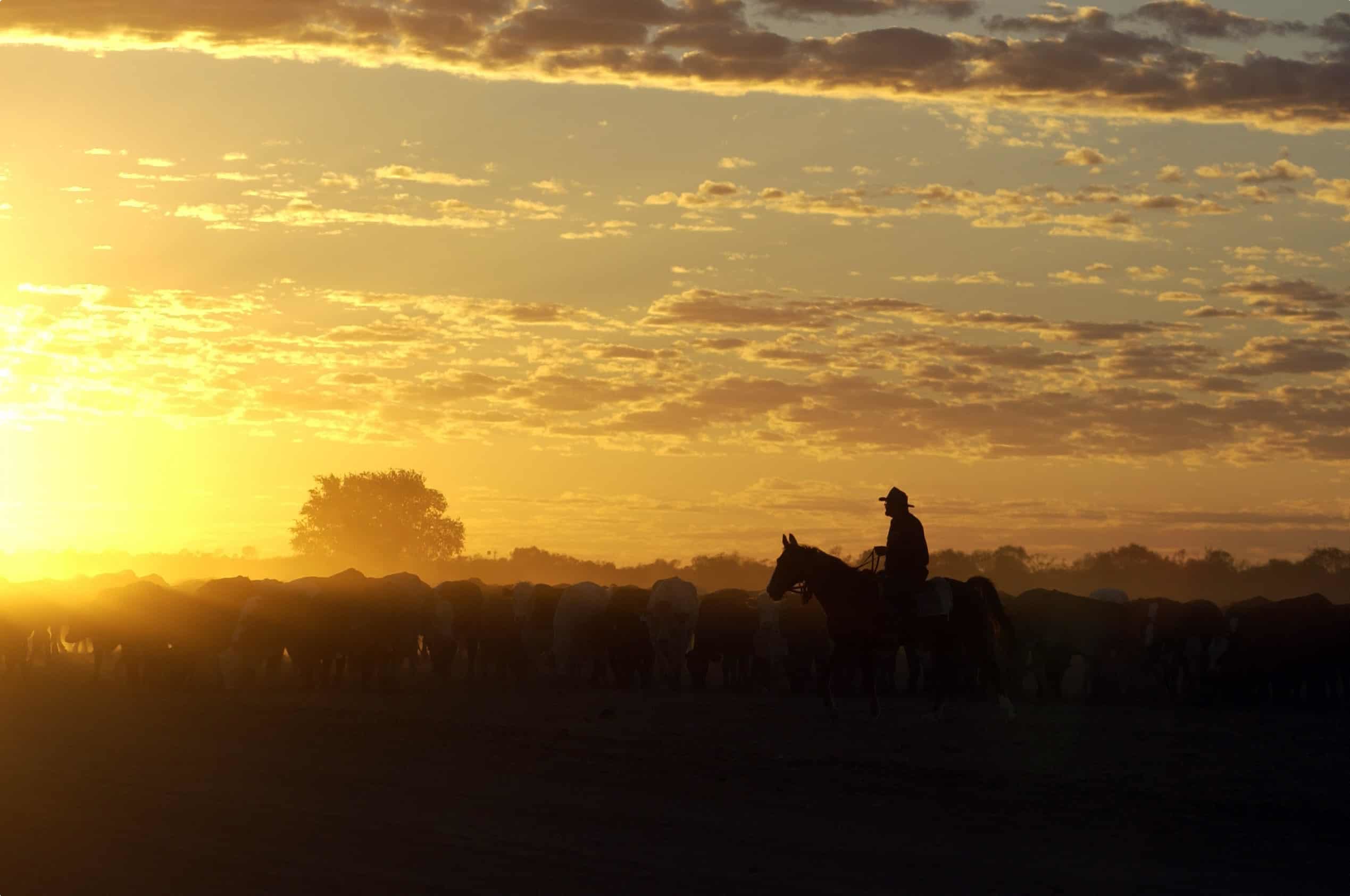
Indigenous Traditional Pathways
Indigenous traditional pathways existed for thousands of years before European settlement, used regularly for trade, travel, and ceremonial and spiritual purposes. Spooner and colleagues (2010: 31) explain that: “For Indigenous peoples, the tangible aspects of pathways (i.e. physical signs of tracks) were intertwined with their spiritual and cultural beliefs, where ancestral beings created the land and its features in the time known as ‘Dreamtime’, establishing law (lore) for interaction between peoples and the environment.”
The paths criss-crossed the nation, providing avenues of access to various parts of the country, dispersing goods, information, technologies, and culture on an inter-clan basis up to thousands of kilometres away from their origins. The Dieri people, east of Lake Eyre, South Australia, for example, visited places at least 800 kilometres apart; while shell from Papua New Guinea reached western New South Wales (Gammage 2011: 149).
For Isabel McBryde – ‘the mother of Australian archaeology’ –the networks were “among the world’s most extensive systems of human communication recorded in hunter-gatherer societies”.

McCarthy (1939) argues that most pathways varied little for thousands of years, as suggested by large amounts of discarded bone, shell and broken tools recorded along them. The paths were well known, knowledge of them passed from one generation to the next, and were often well signposted, generally running along watercourses and between water sources in dry country. A permanent water source was vital for groups of people attending ceremonial activities, for general social life, and as a focal point for trade.
The routes’ directions were also influenced by the availability of food and other environmental conditions. They often followed the easiest and most accessible path through the landscape, such as open wooded areas and ridgelines, rather than the steep, choked gullies, and were free of obstacles. In this way, they rarely form a straight line.
The extensive travel that Aboriginal people did as required for trade and cultural purposes meant that they had a vast knowledge of the world in which they lived, far beyond their direct locality. They used knowledge of the stars to guide them on long journeys, and had understandings of places that they did not have direct experience of.
Early West Australian settler George Moore, for example, observed that “the natives are all aware that [Australia] is an island”. And in 1840, men near Fowler’s Bay, South Australia, correctly assured Edward John Eyre that there was no inland sea; while Sturt recalled that Toonda, his guide in 1844, was able to accurately draw a plan of the Murray-Darling river system.
Traditional Pathways & European Exploration
Following the establishment of European colonies in Australia, explorers were soon sent into the wilderness to discover fertile grazing land and water for the purpose of opening up new commercial interests (Kerwin 2010: 138). Evidence suggests that the early Europeans gained and adopted knowledge of previous traditional pathways, either through discovery or via the assistance of Aboriginal guides and trackers, utilising them to great advantage for their explorations (Spooner et al. 2010: 332-334).
Henry Reynolds (1990) explains that these explorers were aided by the well-trodden Aboriginal pathways, distinguished by foot tracks, and kept in good repair by fire. Travelling parties quickly grew accustomed to finding the foot tracks and following these to waterholes or wells. They also soon learnt to recognise traditional pathways through dense forest – broad swathes of open grassland – which were created and maintained by fire. Following these travel corridors allowed easy movement through country (Spooner et al. 2010: 333-334).
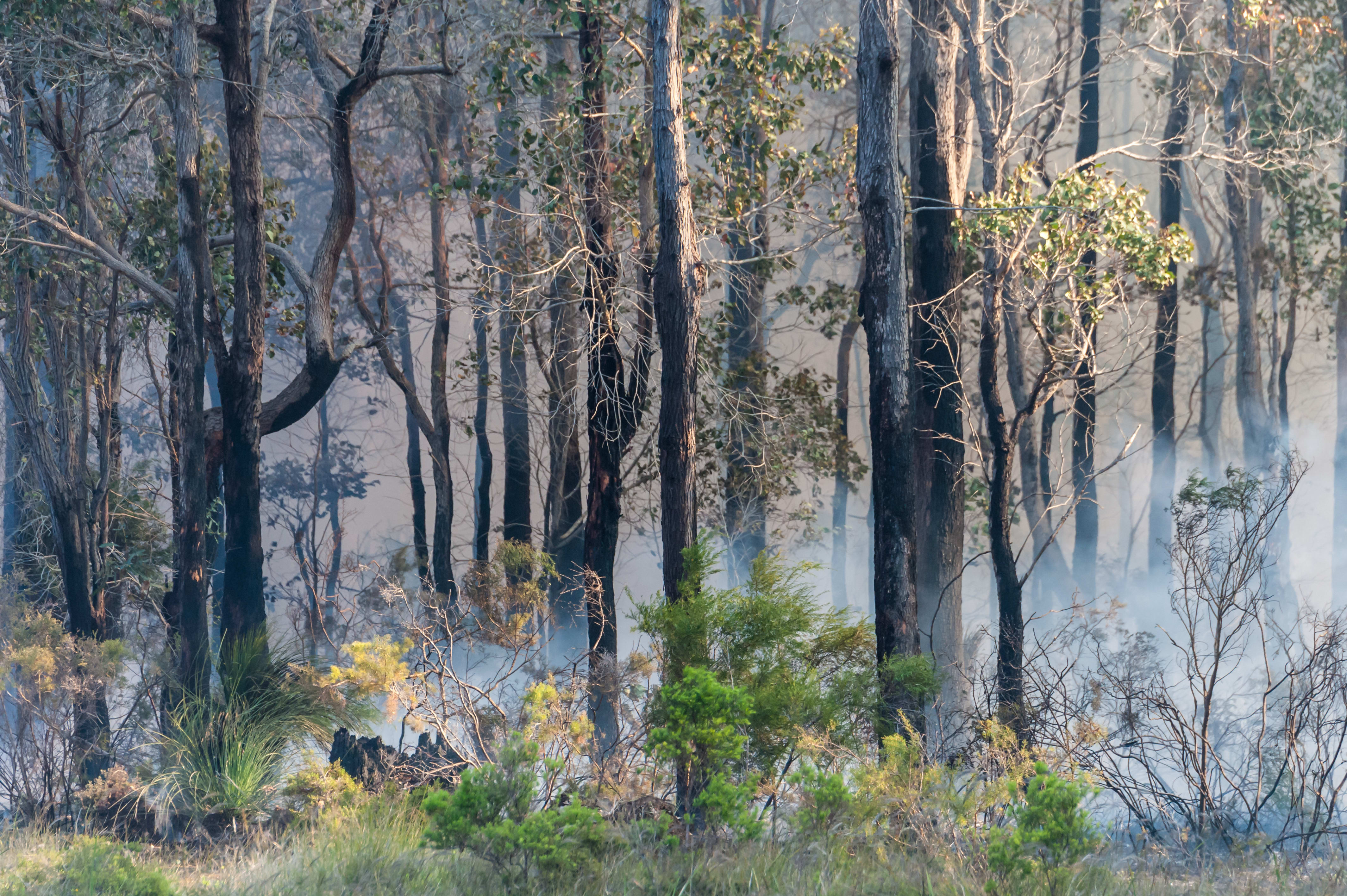
Piles of stones along traditional pathways were more easily recognised forms of markings. Horton (1994) speculates that these large piles of loose stones may in fact have been used as directional pointers. This practice was limited to dry, more rocky landscapes, however, and in most cases, pathways mainly existed as easily distinguished foot tracks (Spooner et al. 2010: 334).
Intricate Aboriginal knowledge about their environment was also critical to the success of early European expeditions into Australia. Spooner and colleagues (2013: 332) explain that “explorers and pastoralists were often guided through the country by Indigenous peoples”, inevitably learning about “vital water, food and other resources, and the pathways used to navigate the landscape”.
Aboriginal guides would assist the likes of Oxley, Mitchell, Sturt, Leichhardt and Eyre, to travel safely through country.
Eyre reflected on their assistance in his writings:
“A great advantage on the part of the natives is the intimate knowledge they have of every nook and corner of the country they inhabit… they know the very rock where little water is most likely to be collected, the very hole where it is the longest retained, they fill their skins, thus obtaining a supply that lasts them many days.” (In Reynolds 1990: 5-17).
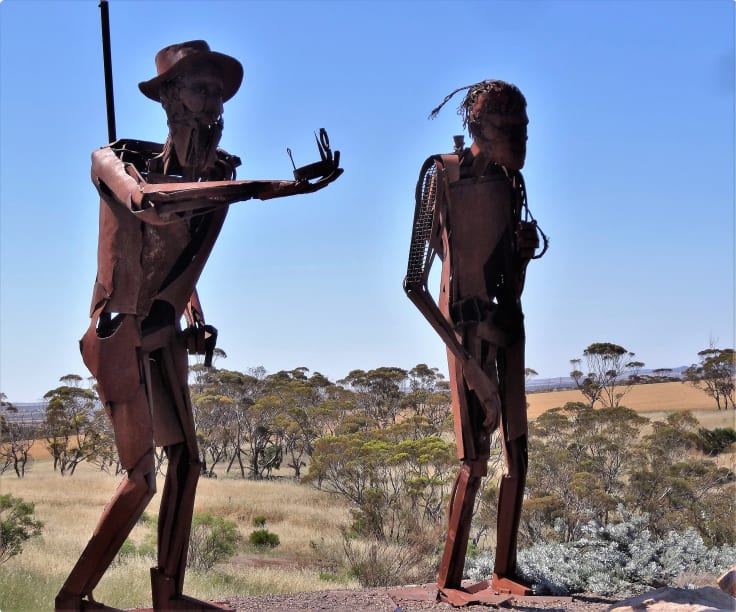
The Indigenous guides and trackers were highly knowledgeable of the landscape – to which they were spiritually connected – due to experience, tradition, and the intergenerational transfer of the knowledge (Spooner et al. 2010: 332). They were able explain where water was located, what plants were good for food or medicines, and what pathways could be walked without interfering with issues of traditional law. All were extremely important for the successful movement of explorers, and later stock drovers, through country.
Adoption of Traditional Pathways as Stock Routes
Indigenous pathways and guides were then later used by pastoralists and drovers as well to guide them through new or unfamiliar country, forming the beginnings of the stock route system. Following the often sketchy maps of the early explorers, they accessed the newly explored areas of the country, only to be met with the same challenges of the physical environment that the explores did, requiring similar resources to survive.
Spooner and colleagues (2010: 335-336) argue that it is logical then that these European settlers and drovers also followed the existing traditional pathways, either by observation or by the guidance of a tracker.
Surveyor Alfred Canning, for example, famous for plotting the Canning Stock Route across 1,800 km of desert in Western Australia, used a number of Aboriginal guides (Kerwin 2010: 160). A cruel man, he did so in a forceful fashion, keeping the trackers in chains and depriving them of food for long periods, releasing them only so that they could direct his team of cattle to water.
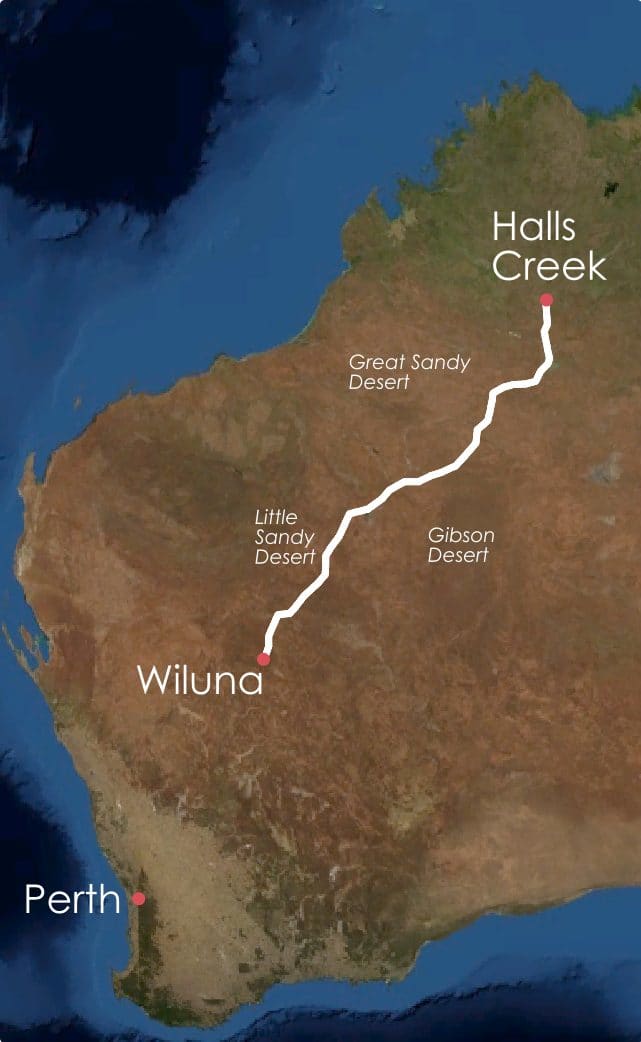
Access to water was particularly critical to the survival of drovers, as well as for their horses and transportation of domestic stock. With Indigenous knowledge, they were able to utilise the chain of water resources along traditional pathways as steppingstones into the interior of NSW and other states.
A 1908 Royal Commission into canning’s treatment of Indigenous people, found that in this case indeed the explorers and exploring party would have been in great danger, perhaps with tragic results, if Aboriginal trackers were not used.
Pastoralist and explorer Nathaniel Buchanan, leader of one of the most epic cattle drives in Australian history, also employed several Aboriginal trackers, as well as stock hands (Kerwin 2010: 160-162). Following Aboriginal tracks across the breadth and length of Australia, his droving feats helped to settle more new country than any other man in Australia. He is noted for his overlanding feats including droving 20,000 head of cattle over 3,200 om from Amarac in Queensland to Glencoe Station in the Northern Territory, as well as being the first man to drove cattle across the top end of Australia.
Aboriginal Stock Workers
Aboriginal people also worked as stockmen and stockwomen, their knowledge of the Australian bush making them indispensable members of any droving team (Kerwin 2010: 159-160). According to Sharp and Tatz (1966), their ability in tracking, knowledge of the country, keen sense of direction, and general bushmanship made them superior workers in the pastoral industry.
These skills were such a valuable asset in stock work that station owners conceded they could not survive without Aboriginal workers, and were willing to pay more for acreage which came with an Aboriginal workforce. As such Aboriginal stockmen and women worked all over Australia: in Queensland in 1885, for example, over 55% of the pastoral workforce were Aboriginal; and in 1937, 3000 Aboriginal people were employed on cattle stations in the Northern Territory.
For Aboriginal peoples, their role as a drover or other worker allowed them to have continuity with their traditional lines and ancestral lands after settlement commenced (Spooner et al. 2010: 336). And the seasonal nature of station droving work allowed them to maintain aspects of their cultural customs, particularly where station travel was combined with ceremonial journeys. In some regions, therefore, Aboriginal people played an active role in the development of stock routes.
Famous Aboriginal Stockmen: Gwoya Tjungurrayi; Vincent Lingiari
The work of all Aboriginal stockmen and stockwomen have been invaluable for Australia. Gwoya Tjungurrayi and Vincent Lingiari, however, stand out in the nation’s history as particularly notable Aboriginal stockmen.
Gwoya Tjungurrayi (c. 1895 – 1965) was a Walpiri–Anmatyerre man and the first Aboriginal person to be featured on an Australian postage stamp. He worked at many stations throughout the Northern Territory as an all-round stockman regarded for his exceptional knowledge of country. He was also known by his nickname One Pound Jimmy, it is said because he would do odd jobs, paint and make boomerangs always charging just “one pound, boss”.
He came to public attention around the world when the photographer Roy Dunstan took a striking portrait of him in 1935, featured on the cover of Walkabout magazine in 1936 and again in 1950. Over the next few decades, the pictured photograph and others taken during their meeting featured in magazines and early Central Australian tourism campaigns.
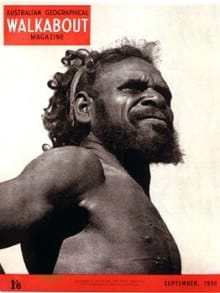
The popularity of this image led to its use on an Australian postage stamp in 1950 and inspired a drawing in 1988 by artist Ainslie Roberts for the country’s $2 coin on which it has remained since, forever immortalising Tjungurrayi.
Gurindji man Vincent Lingiari (1908-1988) was a land rights leader in addition to being a stockman. On 23 August 1866, he led two hundred of his people, employees of Wave Hill station and their families, in a walk-off, demanding better pay, rations and a return of some of Gurindji traditional lands. The Wave Hill walk-off, also known as the Gurindji strike, was to last nine years, the longest in Australian history.
Over that time, the struggle for Aboriginal land rights intensified and wider support grew. In March 1973, the newly elected Whitlam government reached an agreement with Lord Vestey to lease 3236 square kilometres of Wave Hill station back to the Gurindji people. During an emotional ceremony on 16 August 1975 Gough Whitlam poured a handful of local red soil into Lingiari’s hand to symbolise the legal transfer.
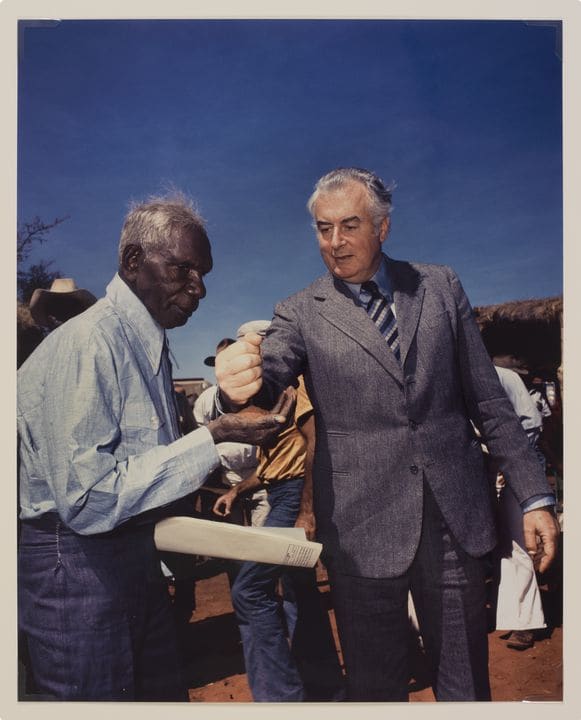
The protest eventually led to the Aboriginal Land Rights (Northern Territory) Act 1976, which provided the basis by which Aboriginal People and Torres Strait Islander people could apply for freehold title to traditional lands (known as Native Title in Australia) in the Northern Territory and the power to negotiate over mining and development on those lands.
Tour of Aboriginal Australia
Travellers with an interest in learning more about the Aboriginal heritage of Australia may want to check out our various outback Australia tours.
These include visits to:
- Archaeological sites including the Madjedbebe rockshelter and the extensive collection of ancient Aboriginal rock art at Kakadu National Park as part of our tour of Kakadu and Darwin
- The ancient indigenous sites including Lake Mungo and the Budj Bim Cultural Landscape as part of our tour of the Southern States of Australia;
- The important cultural site of Wilpena Pound on our tour of the Flinders Ranges;
- The ancient rock art in the Kimberley, Western Australia;
- The Brewarrina Fish Traps in outback Queensland;
- Uluru and Kata Tjuta in the Northern territory.
Every Odyssey guided tour is designed especially for mature and senior travellers, who want an authentic and informed experience of their destinations. Our tours aren’t the typical tourism Australia holiday – Blue Mountains, the Great Barrier Reef, and the penguin parade on Port Phillip Island. Instead, we pride ourselves on getting of the beaten path and making you think about Australia and New Zealand in new ways. We move in genuinely small groups – usually 6-12 per tour – and all tours are cost-inclusive, encompassing accommodation, attraction entries, and transport. For more information, click here, and head to this page to make a booking.
Articles about Australia published by Odyssey Traveller:
- The Kimberley: A Definitive Guide
- Uncovering the Ancient History of Aboriginal Australia
- Aboriginal Land Use in the Mallee
- Understanding Aboriginal Aquaculture
- Mallee and Mulga: Two Iconic and Typically Inland Australian Plant Communities (By Dr. Sandy Scott).
- The Australian Outback: A Definitive Guide
- The Eyre Peninsula: Australia’s Ocean Frontier
- Archaeological mysteries of Australia: How did a 12th century African coin reach Arnhem Land?
For all the articles Odyssey Traveller has published for mature aged and senior travellers, click through on this link.
External articles to assist you on your visit to Australia:
- John Mulvaney: ‘… these Aboriginal lines of travel‘
- Queensland Historical Atlas: Aboriginal dreaming paths and trading ways
- National Museum Australia: Trade with the Makasar
- Fish traps and stone houses: New archaeological insights into Gunditjmara use of the Budj Bim lava flow of southwest Victoria over the past 7000 years
- Isabel McBryde: Exchange in south eastern Australia
- Shells, not pearls, were the real prize in traditional Aboriginal culture
We acknowledge Aboriginal and Torres Strait Islander peoples as the First Australians and Traditional Custodians of the lands where we live, learn and work. We pay our respects to Elders past, present and emerging.
Related Tours

days
Jun, Jul, Sep, Feb, Mar +1Darwin and Kakadu small group tour
Visiting Northern Territory
Explore and learn as part of a small group tour for seniors on this package tour to Darwin and Kakadu National park, a UNESCO world heritage site. This program also visits Arnhem land. Our focus is on ecology, landscapes and history on this 14 day program in the far north of the Northern Territory.

days
Mar, May, Aug, Sep, Oct +2Small group tour of World Heritage sites and more in the Southern States of Australia
Visiting New South Wales, South Australia
Discover the World Heritage Sites of the southern states of Australia travelling in a small group tour. A journey of learning around the southern edges of the Murray Darling basin and up to the upper southern part of this complex river basin north of Mildura. We start and end in Adelaide, stopping in Broken Hill, Mungo National Park and other significant locations.

days
Feb, Mar, May, Jul, Sep +2Guided small group motorcycle tour of World Heritage sites in Victoria and South Australia
Visiting
Discover the World Heritage Sites of the southern states of Australia travelling in a small group tour of like minded motorcyclists. A journey of learning around the southern edges of the Murray Darling basin and up to the upper southern part of this complex river basin north of Mildura. We start and end in Adelaide, stopping in Broken Hill, Mungo National Park and other significant locations.
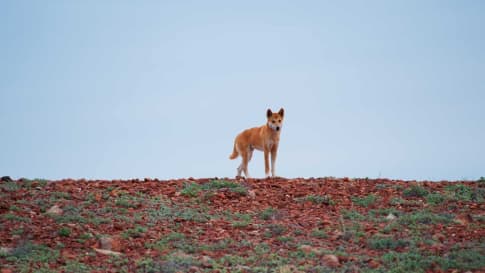
days
Apr, May, Jul, Aug, Oct +2Small group tour of Australia's Flinders ranges
Visiting South Australia
Escorted small group tour of the Flinders range in South Australia from Adelaide. Learn about Coober Pedy, Wilpena pound and water system of Lake Eyre as we explore and learn also about the history of the people who explored the Flinders.
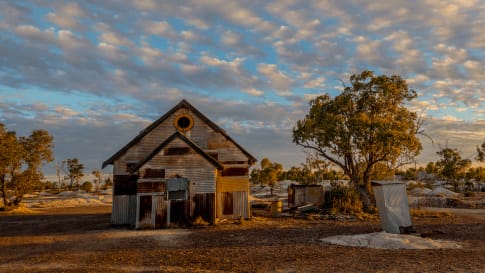
days
Mar, Apr, May, Jul, Aug +2Small group tour of outback Queensland
Visiting New South Wales, Queensland
To Dubbo and back, this small group tour takes you to learn about the Brewarrina fish traps, we travel high up into North Queensland to see the Dinosaurs of Winton and incredible Aboriginal rock art at Cathedral gorge and learn about opal mining and the history of Lightning ridge.

13 days
May, Jun, Jul, Aug, SepSmall group tour of Australia's Kimberley
Visiting Western Australia
Escorted small group tour of the Kimberley. We explore and visit The Bungles, Bell Gorge, Mitchell plateau & Halls Creek in the dry season. Amazing landscapes intertwined with Aboriginal communities resident more than 45,000 years.
From A$15,390 AUD
View Tour
days
Apr, May, Jun, Jul, Aug +3Small group tour exploring Alice Springs and Uluru-Kata Tjuta National Park
Visiting Northern Territory
Explore and learn about historic Alice Springs, The MacDonnell ranges, and Uluru-Kata Tjuta National Park. This escorted small group tour for mature and senior travellers, travelling as a couple or solo travellers also visits the Hermannsburg Lutheran mission plus Henbury meteorite site learning about the Aboriginal outback and contemporary art.

days
Apr, Jun, Aug, Nov, Mar +2Exploring Alice Springs and Uluru-Kata Tjuta National park by Motorbike
Visiting
Explore on a Motorbike tour in the Outback and learn about historic Alice Springs, The MacDonnell ranges, and Uluru-Kata Tjuta national park. This escorted small group Motorbike tour for mature and senior travellers, travelling as a couple or solo travellers also visits the Hermannsburg Lutheran mission plus Henbury meteorite site learning about the Aboriginal outback and contemporary art.
Articles

Aboriginal Kinship systems
Article about Aboriginal kinship to assist small group tours in Australia understanding Ancient aboriginal society and the contemporary view. Kinship influences the relationships including aboriginal trading routes.

Aboriginal Sites of Importance in Outback Queensland, Australia
Outback Queensland is hiding a number of unforgettable indigenous experiences on this small group tour for senior travellers. Especially at the Brewarrina Fish Traps, and Carnarvon Gorge, for example where you can experience and learn about dreamtime creation stories, age-old cultural practices and traditions, and Aboriginal art.

Aboriginal Songlines
Songlines trace the journeys of ancestral spirits who created the land and all natural phenomena. The creation stories as well as practical knowledge needed for survival in outback Australia. We experience this knowledge on our small group tours into Outback Australia.

Ancient Aboriginal trade routes of Australia
Ancient Aboriginal trade routes of Australia Trade was a central part of life for Aboriginal people prior to the British settlement of Australia. Trading routes criss-crossed the nation, dispersing goods, information, technologies and culture thousands…
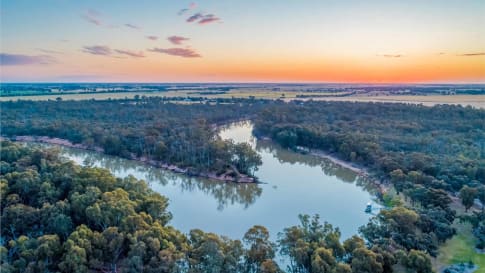
Appreciating Australian River Systems
Appreciating the linking of the river network into the Australian, history, culture and landscape on a small group tour for mature and senior travellers of couples or solo travellers is an integral part of understanding the continent of Australia and Aboriginal settlement.

Arnhem Land Songspirals
Article about the importance of songlines in travelling from place to place. Supports small group tours learning about Aboriginal culture of Australia for couples or singles mature travellers exploring outback Australia.

Echuca and Murray-Darling Trade, Victoria
The wool trade along the Murray was vital to British-Australia. Echuca was a major port for paddle steers. Learn and explore more on a Odyssey Traveller small group package tour of Victoria and the goldfields for mature and senior travellers, couples or singles with a curiosity. Understand the relationship of the Murray river to Echuca to Adelaide and Mildura.

Expeditions of John McDouall Stuart in the Flinders.
John Stuart was an explorer who mapped the Flinders ranges as well as a path through the centre of Australia. The principal road from Port Augusta to Darwin is the Stuart Highway. The Small group tour of the Flinders ranges spends time learning about Stuart.

Halls Creek, Western Australia
Halls Creek an important stop on our Small group tour of the Kimberley. We learn about the gold rush on this tour for mature and senior travellers, couples and singles.

Kununurra, Western Australia
Explore the sights and history of Kununurra, with its spectacular lakeside beauty and outback charm, Kununurra is one of the Kimberley's most popular highlights. Odyssey offers small group tours for mature and senior travellers, couples, and solo travelers to Australia and Western Australia.

Marree and the Railway Track, South Australia
Learn more about the importance of this outback town in the settlement of Australia. Visited as part of our small group package tours for mature and senior travellers, couples or singles this is a town with history close to the Birdsville track and the Oodnadatta track.

The Australian Outback: A Definitive Guide
Explore learn and consider what is the outback in this article. For mature and senior travelers considering joining a small group package tours into the outback to see, learn and explore about this unique place, not only the landscape but the Aboriginal approach to living. On each of the tours for couples and the single traveler you learn something different but fascinating, from Outback Queensland, the Flinders, Broken Hill and the Kimberley and the wildflowers all contribute to this question, what is the outback?
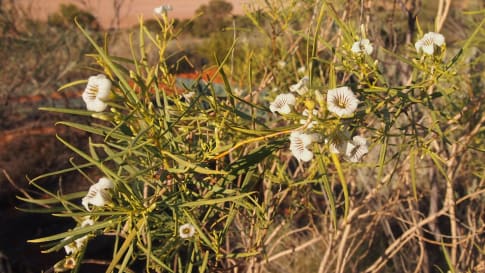
The Pituri Road: Ancient Aboriginal Trading Route
Article that adds further detail about the historic trading patterns of the Aboriginal outback for small group tours for couples and solo travellers interested in history.

The Strzelecki Track, South Australia
Strzelecki, made a significant impression on Central, Southern and Eastern Australia for such a short visit. This article continues on that theme, importantly this desert is part of a small group tour for mature and senior travellers that starts and finishes in Broken hill. Just 12 participants, a program suitable for couples and singles. This link shows the portfolio of tours offered in Australia.

Understanding the Channel Country, Australia
Unique geography and a fascinating history as a pre-historic sea, and subsequently precious land to Aboriginal people and European pastoralists is explored on a small group tour for mature and senior travellers into the Outback.

